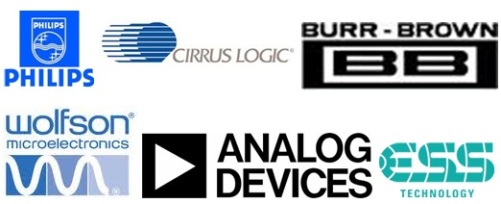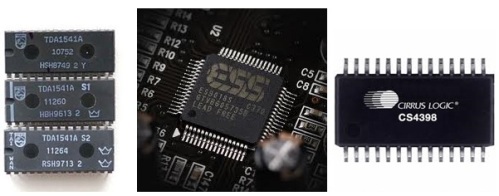|
DAC
DAC, is also called a digital-to-analog converter (D-to-A). It is a device that converts digital code to analog signal. Analog signals are stored digital format as 1’s and 0’s. The function of the Digital to Analog Converter is to convert the 1’s and 0’s into analog signals. One of the applications for Digital to Analog Converter is to convert digital into analog audio signal, and therefore it fits as a topic in www.diy-audio-guide.com! Audio signal, by nature, is analog signal and it needs to be converted to digital signal by an ADC, analog-to-digital convert (A-to-D), which is a reverse function of Digital to Analog Converter. D.A.C.s are usually contained in CD players, digital music players, PC sound cards, cell phones, home theater receivers, and etc. D.A.C.s can also be found in high end HIFI systems, as standalone equipment dedicated just to convert digital signal to analog audio signal. What do we look for when we choose D.A.C.s? Although specifications are very important, it is not the only criteria to determine the superiority of the D.A.C.s. There are 2 camps actually, the high resolution high performance versus the NOS (non over-sampling) camp. The high performance camp chasses the highest resolution, THD+N, DNR, Dynamic Range, and etc. The NOS Digital to Analog Converter camp focus on the sound; for example the Philips TDA1541, TDA1543, TDA1545 Digital to Analog Converter chips, are liked by a lot of audiophiles over the tonality it possesses. NOS Digital to Analog Converter does not have the best specifications on paper but the sound tells another story. Here are some parameters that we can refer to when looking at a Digital to Analog Converter:
Who are the top audio DAC chip manufacturers now? Here are the major manufacturers and also some of the top / most popular DAC chips available in the market currently:
Read more about DAC here! What do you need for computer audio playback? USB DAC!!! Ken 6/27/2011 Return from DIY Audio Guide / DAC to DIY Audio Guide
|



